Alaska is the last frontier and much of it is still wild.
Summers are wonderful, but that is offset by extremely harsh winters.
It is a beautiful state, but largely untamed.
There are a lot of very good reasons to want to live in Alaska, but each of them comes with a downside.
It can be a great place to live, but you need to know what you are getting into.
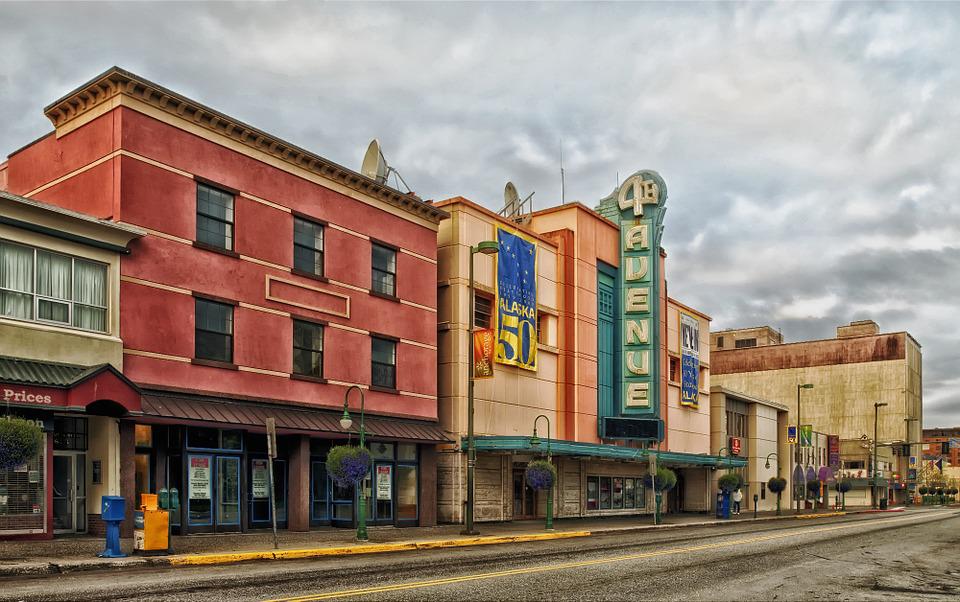
Contents
- Pros of Living in Alaska
- 1. The long days of summer are the best thing about living in Alaska
- 2. The outdoors is a huge part of Alaskan life
- 3. Alaska is still wild for the most part
- 4. You can get paid to live in Alaska
- 5. There are lots of jobs available in Alaska
- 6. The small town atmosphere is all over the state
- 7. Alaska is a business-friendly state
- 8. People in Alaska have a more laid-back lifestyle than in the lower 48 states, and they tend to adopt a live and let live attitude
- 9. Taxes are low in Alaska for a variety of reasons
- Cons of Living in Alaska
- 1.The long dark winters are probably the worst thing about living in Alaska
- 2. The lack of light is due to its far northern location, and that also means it gets very cold
- 3. There are two more drawbacks related to the winter
- 4. Alaska has the highest cost of living of any state
- 5. Being your own boss can also get complicated
- 6. There is a high crime rate in Alaska
- 7. Travel can be complicated in Alaska
- 8. While Alaska is incredibly beautiful, nature can also be a negative here
- 9. Alaska can be dangerous
- Pros and Cons of Living in Alaska – Summary Table
- Alaska Safety Overview
- Frequently Asked Questions
Pros of Living in Alaska
1. The long days of summer are the best thing about living in Alaska
On June 21, the longest daylight day of the year, Anchorage has 22 hours of sunlight, and it does not get totally dark at all.
For a few months, there are at least 18 hours of sunlight in Anchorage, and even more, as you go north.
Temperatures are in the 70s most of the time.
Visitors are shocked when they experience long days, and Alaskans love them.
2. The outdoors is a huge part of Alaskan life
There are mountains and lots of spaces with hardly any people.
Around Anchorage alone, there are hundreds of miles of trails to explore.
In winter there is skiing, snowshoeing, and even dog sledding.
Most of the cities are along the coast, so you can enjoy the coastal lifestyle as well.
The long days of summer lend themselves to even more outdoor activity.
3. Alaska is still wild for the most part
In addition to experiencing a lot more of the outdoors, you will see a lot more wildlife than you are used to.
Even in a big city like Anchorage, you can still see a moose wandering around.
There are bears and sometimes trails are closed as a result.
You can also see a lot of sea creatures and salmon.
It can be a hunting and fishing paradise.
4. You can get paid to live in Alaska
Every resident of the state gets what is called a PFD payment from the government.
Last year everyone got $1,111, and that applies to every individual.
A couple with two children would get $4,444.
You have to have lived in the state full time for at least a calendar year to qualify.
The money comes from a permanent fund that comes from the oil and gas industries.
5. There are lots of jobs available in Alaska
The oil and gas industries are huge and that is well known.
Jobs involved in commercial fishing are also plentiful.
Construction workers are always needed.
There are also jobs available in many areas, such as healthcare, military, government, and computer technology.
The tourism industry is also growing rapidly and summer help is always needed there.
6. The small town atmosphere is all over the state
Anchorage has 300,000 people, and the next two largest cities, Juneau and Fairbanks, have around 30,000.
After that, towns are about 10,000 people or less.
People are generally friendly in small towns and soon you will know everyone, and everyone will know you.
You could also easily adopt a very rural lifestyle as there is a lot of land available.
7. Alaska is a business-friendly state
They want people to come and start businesses there, so they make the process as easy as possible.
You can get state licensing and incorporation papers completed online even before you move.
Some individual towns have additional rules for business licensing, but the process is still very simple.
You could decide to start a business and have it up and running in a week or two.
8. People in Alaska have a more laid-back lifestyle than in the lower 48 states, and they tend to adopt a live and let live attitude
There is a lot of cultural diversity as well and that lends itself to a more accepting environment.
There are a lot of native Alaskans, and people of all cultures have moved in over the last century.
9. Taxes are low in Alaska for a variety of reasons
There is no state income tax and no sales tax.
There is property tax and excise tax, but the overall burden is low.
Alaska has the lowest tax burden of any of the 50 states in America.
Alaskans pay only five percent of their income in taxes, and that is almost a full percentage point less than the next state.
The highest is New York at 12.75 percent.
Cons of Living in Alaska
1.The long dark winters are probably the worst thing about living in Alaska
This is the other side of the amazing summers that have 18 plus hours of daylight.
In the most northern part of the state, there may be no sunlight at all for two months.
In Anchorage, there are days with just a few hours of light.
All of that darkness, combined with the bitter cold, leads to depression and other health issues.
2. The lack of light is due to its far northern location, and that also means it gets very cold
The North American record for cold, minus 80 degrees, was set in Alaska in 1971.
There are areas in the far north that never get above freezing for a whole year.
In Fairbanks, the average temperature for January is 0.
There may be a solid three months of near-zero degrees weather.
Anchorage is not as cold, but still very cold in winter.
There is a lot of snow everywhere in winter, so you will probably have to do a lot of snow removal.
Anchorage can get 60 inches of snow over a single winter, and the northern areas are a lot more than that.
Your heating costs will be a lot higher as well.
Anchorage has lower fuel costs with its natural gas, but heating your home will be the biggest expense you will face no matter where you are in the state.
4. Alaska has the highest cost of living of any state
Just about everything has to be imported and that is made even more expensive by its remote location.
The state has a low population, but it is still hard to get necessities for people and that drives up prices.
Alaska has a lot of oil, but no refineries, so its fuel has to be imported, so fuel is also more expensive.
Do not be super impressed by higher wages in Alaska, because all your expenses will be higher too.
5. Being your own boss can also get complicated
If you are self-employed, you must register and become a company.
Businesses take on more of a tax burden than families do.
Even if you claim to be a freelance writer, you are still considered a business.
With this setup, your tax burden could end up being higher than it is in some other states, or for those working at jobs for other people.
6. There is a high crime rate in Alaska
A smaller population would skew the statistics to some degree, but it is still something to be aware of.
Alaska has a violent crime rate of 8.4 per 1,000 people, double the national average which is 4.0.
Rape accounts for 18 percent of violent crimes.
Alaska ranks seventh in the number of rape cases.
Alaska is slightly higher than the national average for murders as well.
7. Travel can be complicated in Alaska
There is no highway system connecting all areas of the state.
With the harsh winters, it would be very difficult to do.
There are several towns that can only be accessed by plane or boat.
For many people, private planes are the best way to get to other parts of the state.
8. While Alaska is incredibly beautiful, nature can also be a negative here
There are a lot of earthquakes and volcanic eruptions.
Fortunately, most are mild, but there is always the potential for them to get bad.
There are tsunamis because of earthquakes, which can also cause problems.
There are also moose and bear attacks that happen out in the wild.
9. Alaska can be dangerous
The state has the second most accidental deaths of any state in America, trailing only Mississippi.
A lot of people die from exposure to cold weather, or from carbon monoxide due to faulty heaters or chimneys.
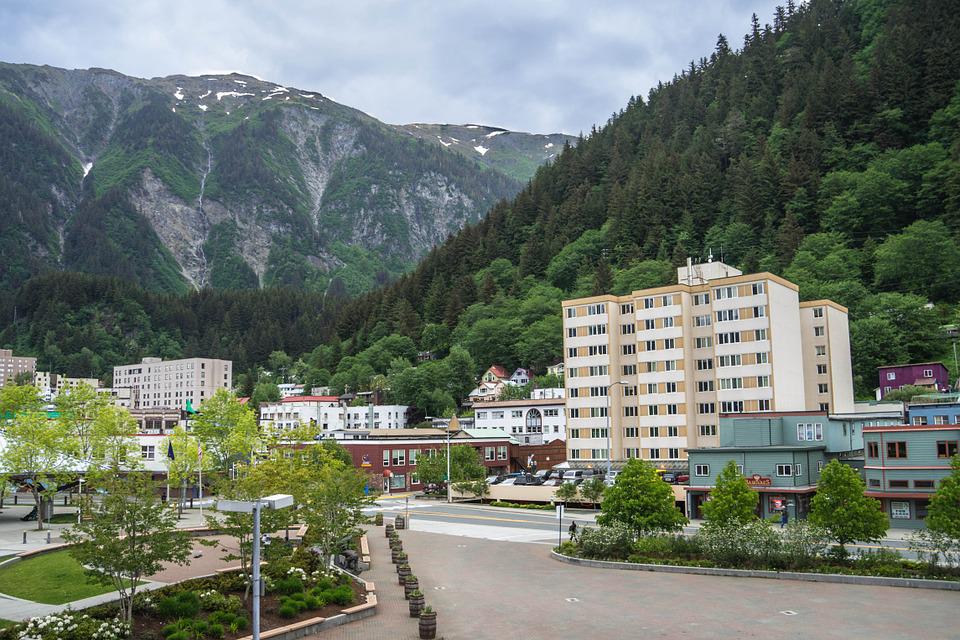
Pros and Cons of Living in Alaska – Summary Table
| Pros of Living in Alaska | Cons of Living in Alaska |
|---|---|
| 1. The long days of summer are the best thing about living in Alaska | 1.The long dark winters are probably the worst thing about living in Alaska |
| 2. The outdoors is a huge part of Alaskan life | 2. The lack of light is due to its far northern location, and that also means it gets very cold |
| 3. Alaska is still wild for the most part | 3. There are two more drawbacks related to the winter |
| 4. You can get paid to live in Alaska | 4. Alaska has the highest cost of living of any state |
| 5. There are lots of jobs available in Alaska | 5. Being your own boss can also get complicated |
| 6. The small town atmosphere is all over the state | 6. There is a high crime rate in Alaska |
| 7. Alaska is a business-friendly state | 7. Travel can be complicated in Alaska |
| 8. People in Alaska have a more laid-back lifestyle than in the lower 48 states, and they tend to adopt a live and let live attitude | 8. While Alaska is incredibly beautiful, nature can also be a negative here |
| 9. Taxes are low in Alaska for a variety of reasons | 9. Alaska can be dangerous |
Alaska Safety Overview
READ THE FULL REPORT: Alaska Safety Review
Safety Index: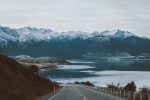
- OVERALL RISK: MEDIUM
- TRANSPORT & TAXIS RISK: LOW
- PICKPOCKETS RISK: LOW
- NATURAL DISASTERS RISK: MEDIUM
- MUGGING RISK: HIGH
- TERRORISM RISK: LOW
- SCAMS RISK: MEDIUM
- WOMEN TRAVELERS RISK: LOW
Frequently Asked Questions
What is the hardest thing to adjust to in Alaska?
The very long days of summer and the long days of winter darkness are the biggest cultural shocks newcomers will find in Alaska.
When days are 22-hours long, you have to trick your body into going to sleep while the sun is bright.
It can also be very hard to deal with months of darkness and bitterly cold weather.
Just how isolated is Alaska?
It would take about a week to drive the 2,262 miles between Anchorage and Seattle, to give you an idea of the distance.
Flights are longer than you would expect from Alaska to the lower 48 states.
Many parts of Alaska are closer to Russia than the lower 48 states.
Road conditions will be very bad in winter as well.
How do cars start when it is so cold?
You will need a heater to put on your engine during the winter.
You will have to plug it in overnight.
During the winter, the temperature can dip well below zero, and freeze your car to the point it will not start.
Many workplaces have plugins for employees to use to keep their engines warm enough to start.
What are the main reasons for not wanting to live in Alaska?
The long, bitterly cold winters that are dark most of the time are the worst thing that people have to deal with.
There is a lot of snow as well.
Getting to the lower 48 states takes some effort, and even getting around the area where you live can be hard.
The high cost of living would be a solid reason as well.
What are the main reasons for wanting to move to Alaska?
If you love the remote wilderness, you will love Alaska.
There are a lot of outdoor activities to enjoy, regardless of the season.
There is also a positive sense of community with most people that helps you feel welcome.
It is not for everyone.
If you can stand the harsh winters, the delights of summer will make it all worthwhile.
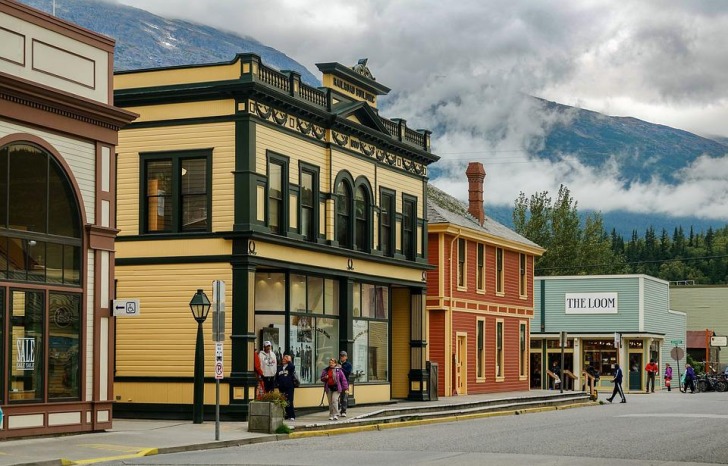
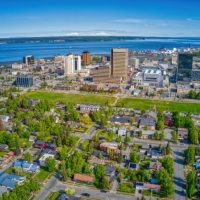
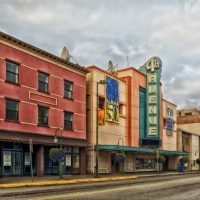
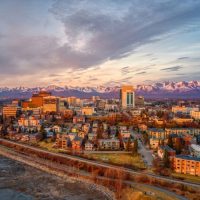
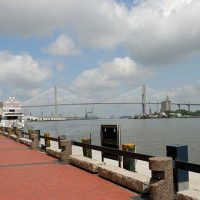
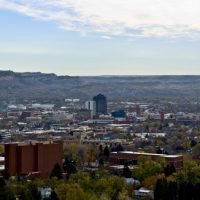
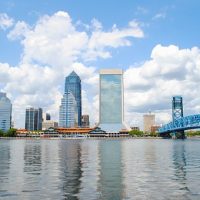





I live in Alaska and a lot of this is not portrayed accurately. That photo of downtown Anchorage looks like a colorized version from the 60s or something. The lower 48 gets colder than most places in Alaska every winter and that’s the norm. We also don’t die due to the cold weather unlike lots of places in the lower 48 who get hit with winter storms (think Minnesota or Texas). Trails are hardly ever closed due to wildlife. You will not see a moose here and there in Anchorage; you will see moose everywhere in Anchorage and black bears sometimes. There are multiple highway systems that connect most of Alaska together. You would have to fly to southeast (Juneau) but anywhere else you would have to fly to are places someone shouldn’t really be in anyway because they are villages. It’s dumb to say you’re closer to Russia than most placed in the US. It’s true but incredibly misleading. As if you could hop across the pond or boat over to Russia (good luck if you try). Risk for terrorism is not low. Anchorage holds the Port of Alaska, a joint military base, the Ted Stevens International Airport, and is right next to Russia who has nukes and isn’t fond of the US. We have a higher risk of terrorism than most places in the US. I’ve lived in Alaska for 24 winters and have yet to have any issues starting my car and haven’t plugged in my car once. If I did need to plug it in, I wouldn’t be attaching a heater to my engine. People don’t die from carbon monoxide poisoning at any higher rate than anywhere else. Anchorage does not give you a small town vibe. It gives you a “let me avoid the drunk homeless so I don’t get harassed” vibe. Anyway, hope this helps.
Good comments! Thanks! I am going to Alaska first timeon 7/24/23 and plan to stay at least through 9/1/23.
woah dude. Awesome sauce!!!